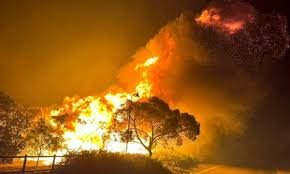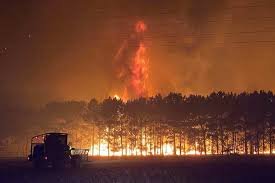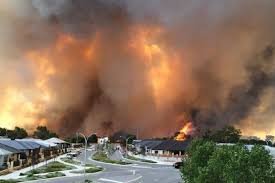Introduction of Fire:
Fire Perth, the capital city of Western Australia, is known for its sunny weather, scenic landscapes, and vibrant urban life. However, like many areas with dry climates, Perth faces the constant challenge of fire outbreaks, particularly during the summer months. From bushfires in rural areas to structural fires in urban centers, safety is a critical concern for residents, businesses, and authorities alike.
In this comprehensive guide, we’ll explore the causes, impacts, and prevention measures related to fires in Perth, and offer practical advice on preparing for and responding to fire emergencies.

Why Fire in Perth is Vulnerable to Fires
1. Climate and Weather Conditions
Perth experiences hot, dry summers, with temperatures often exceeding 40°C. These conditions create an environment ripe for wildfires, especially when combined with strong winds that can rapidly spread flames.
2. Vegetation and Fuel Loads
The region is home to expansive bushlands and forests, which contain highly flammable native vegetation like eucalyptus trees. Dead leaves, branches, and undergrowth accumulate during the cooler months, providing ample fuel for fires.
3. Urban Expansion
As Perth continues to grow, urban areas increasingly encroach upon bushlands. This urban-bushland interface heightens the risk of fires impacting residential and commercial properties.
Types of Fires in Perth
1. Bushfires
Bushfires are a significant concern in and around Perth. These fires can devastate large tracts of land, destroy wildlife habitats, and threaten nearby communities. The peak bushfire season typically occurs between November and April.
2. Structural Fires
Fires in residential, commercial, and industrial buildings can occur due to electrical faults, cooking accidents, or arson. In densely populated areas, such fires can quickly become catastrophic.
3. Vehicle Fires
Vehicle fires, while less common, are still a risk in Perth. Causes can range from mechanical failures to arson.

Recent Fire Incidents in Perth
Perth has seen its share of devastating fires in recent years. Notable incidents include:
- Wooroloo Bushfire (2021): This catastrophic fire destroyed over 80 homes and burned more than 10,000 hectares of land.
- Baldivis Fire (2023): A fast-moving bushfire caused widespread panic, leading to evacuations and road closures.
- Perth Hills Fires: Repeated incidents in this area underline the vulnerability of hillside communities.
The Impacts of Fires on Perth
1. Environmental Damage
Fires can destroy ecosystems, lead to soil erosion, and pollute water sources. The recovery of burnt areas can take years.
2. Economic Losses
Fires lead to costly damages to properties, infrastructure, and businesses. The agricultural sector is often heavily affected, especially during bushfires.
3. Human Cost
Beyond property damage, fires can result in injuries, loss of life, and long-term psychological trauma for affected individuals and communities.
Fire Prevention Strategies
1. Bushfire Management
- Controlled Burns: Authorities conduct prescribed burns to reduce fuel loads in bushland areas.
- Clearing Vegetation: Property owners are encouraged to maintain a safe distance between their homes and flammable vegetation.
- Firebreaks: Establishing firebreaks can help contain fires and prevent them from spreading.
2. Community Awareness
Programs like the “Bushfire Ready” initiative educate residents about preparing for bushfire season. Workshops, drills, and community meetings play a vital role in raising awareness.
3. Building Regulations
New constructions in fire-prone areas must comply with fire safety standards, including the use of fire-resistant materials.
4. Fire Safety Equipment
Installing and maintaining fire alarms, extinguishers, and sprinkler systems is crucial for homes and businesses.
How to Prepare for Fire Emergencies in Perth
1. Create a Bushfire Survival Plan
A detailed survival plan should include:
- Evacuation routes and meeting points.
- Emergency contact numbers.
- A list of essential items to pack, such as documents, medications, and food.
2. Prepare Your Property
- Clear Debris: Remove leaves, branches, and other flammable materials.
- Seal Gaps: Prevent embers from entering your home by sealing gaps in roofs, doors, and windows.
- Install Mesh Screens: Use metal screens on vents and gutters to block embers.
3. Stay Informed
- Emergency Apps: Download apps like “Emergency WA” to receive real-time updates on fires.
- Weather Alerts: Keep an eye on weather forecasts, particularly during high-risk periods.
What to Do During a Fire
1. Evacuate Early
Authorities often advise residents to evacuate early to avoid being caught in dangerous situations. Follow all directives from emergency services.
2. If Trapped, Shelter Safely
- Stay indoors and close all doors and windows.
- Fill sinks and bathtubs with water to use as an emergency supply.
- Wear protective clothing to shield yourself from radiant heat.
3. Call for Help
Contact emergency services by dialing 000 for immediate assistance.
Responding to Structural Fires
1. Use Fire Extinguishers
If a fire is small and manageable, use a fire extinguisher to put it out. Ensure you know how to operate it safely.
2. Evacuate the Building
- Follow your building’s evacuation plan.
- Avoid using elevators, as they can become trapped or malfunction during a fire.
3. Stop, Drop, and Roll
If your clothing catches fire, remember to stop, drop to the ground, and roll to extinguish the flames.
Post-Fire Recovery in Perth
1. Assessing Damage
Engage licensed professionals to inspect your property for structural damage. Avoid entering unsafe buildings.
2. Insurance Claims
File insurance claims promptly and provide all necessary documentation, including photos and receipts.
3. Emotional Support
Recovering from a fire can be emotionally draining. Seek support from counseling services and community organizations if needed.

Fire Services and Resources in Perth
Perth is served by the Department of Fire and Emergency Services (DFES), which plays a critical role in fire prevention, preparedness, and response. Key resources include:
- Emergency WA Website: Offers live updates on fire incidents and warnings.
- Bushfire Ready Groups: Community-led initiatives to enhance local preparedness.
- Volunteer Fire Brigades: Provide vital support in fighting fires and conducting rescue operations.
Fire-Proofing Perth’s Future
Addressing Perth’s fire risks requires a coordinated effort from individuals, communities, and authorities. By adopting proactive measures, raising awareness, and investing in fire-resilient infrastructure, Perth can minimize the devastating impacts of fires and ensure a safer future for all.
If you live in Perth, take action today to protect yourself, your loved ones, and your property from fire risks. Preparation is the key to surviving and thriving in the face of this ever-present danger.
By following the guidelines outlined in this article, residents and businesses in Perth can better prepare for fire emergencies and contribute to a resilient and safer community.
